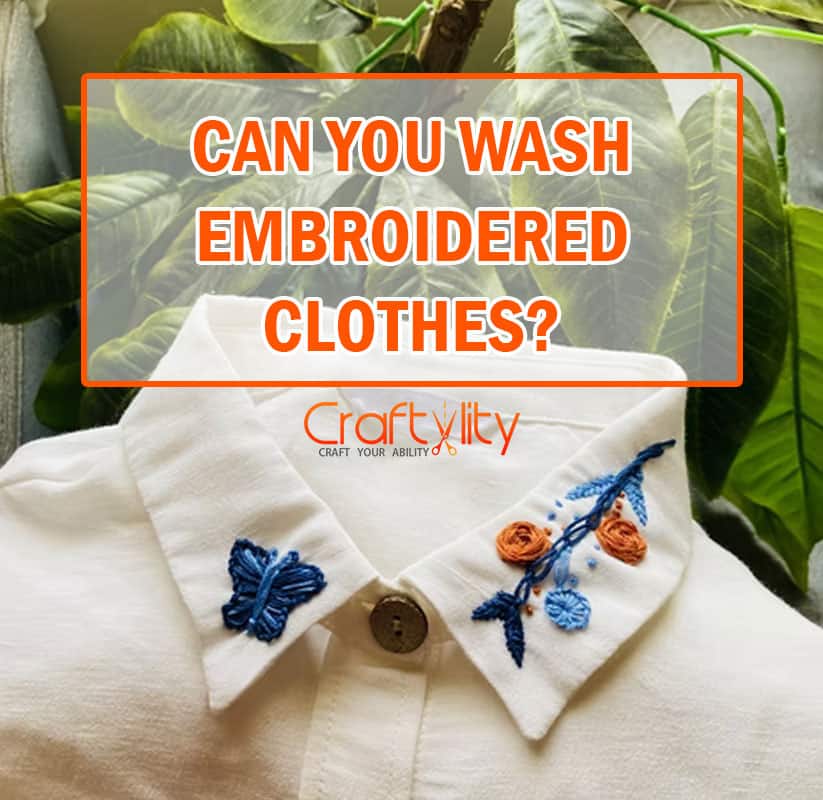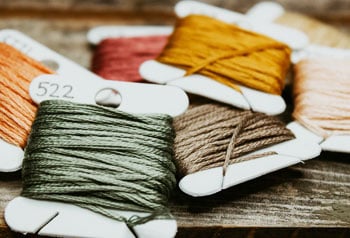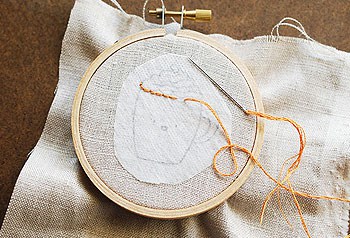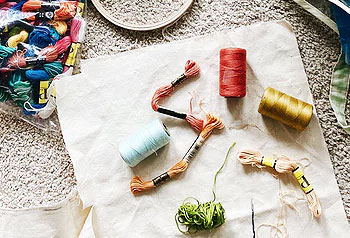Hand embroidery is a delicate craft and often time-consuming process. If you want to know can you wash embroidered clothes, the following tips will help you avoid ruining it and keep your stitching looking brand new! Your finished product will look amazing when you are done.
Many people think you can’t wash embroidered clothes because it will ruin the stitching. This is not always true. If you are careful, you can wash your clothes without harming the design on them! There are a few things that need to be considered before washing these types of clothing though.

You have to know what kind of fabric it’s made out of and how delicate the design is so that you don’t damage anything with water or soap. If you look at the label for any care instructions, they should tell what materials the garment is made from and if it needs special handling.
So, Can you wash Embroidery Clothes?
Do you have any embroidered clothes? Avoid exposing them to strong detergents, which can cause permanent damage. Instead, use milder ones like soap or baby shampoo for gentle cleaning! Always make sure they are completely dry before storing away in a wardrobe because soaking will ruin the delicate fabric and lead into more problems with spots from sweat stains getting under it when worn again later on down the line – so no leaving pieces lying around while wet either; just hang-dry these types of garments instead if possible.
1. How to protect hand embroidery on clothing?
You can use a variety of techniques to protect hand embroidery on clothing, it’s important to think about the following tips to take into consideration before starting a project.
a. Use good quality embroidery floss:

It is recommended to use high-quality embroidery floss because it will be more durable. It should not have a tendency to become fuzzy, so make sure that you use the best available materials for this task! I did an article on “What is the Best Hand Embroidery Thread – 15 Best Types to Choose from” if you’re interested in learning about what they are or how they work together with your stitching needs-click here now!.
b. Use embroidery stabilizer:

Embroidery stabilizer is a thin fabric that can be used as a foundation beneath your embroidery. It provides strength to the design, protects the fabric from damage and prevents stitching from sinking into the fibers of your garment. This process is called hoop burn or ghosting.
You want to make sure you have an appropriate thickness of stabilizer for different types of designs because it should not be too thick or too thin. If you are using thicker fabrics like denim, consider using a medium-weight tear-away stabilizer instead of iron-on adhesive-type products because they will cause puckering in those denser materials.
c. Secure All Loose Threads:
A quick and easy way to secure all loose threads is by using a needle. Thread the needle through each string or thread that needs to be secured, then pull it tight until it’s snug against the fabric. Tie off with a knot on the underside of your fabric, near where you began sewing. This will keep your project looking neat and tidy!
If all the above factors are tested properly and the base fabric is washable, you can machine or hand wash embroidered items on the gentle cycle following the care label guidelines.
2. Can I wash my embroidery? or Can embroidery thread be washed?
The answer to this question is yes, you can wash the embroidery. Embroidered clothes are created with a thread called embroidery floss and by using high-quality threads in your design will save your precious projects from getting ruined.
Testing embroidery threads for Colorfastness:
To be on the safer side, patch test embroidery threads for colorfasting before washing. It is possible to wash and dry your stitching so don’t worry about losing any of that hard-earned progress! Embroidered items are created using embroidery floss which can get ruined when exposed to too much water or detergent but by following these steps you’ll ensure quality results every time: safety first though – always use low-temperature washers with delicate fabrics such as chiffon/silk because hot cycles may cause shrinkage in fabric size.
Did you know that embroidery fibers can cause problems if they’re not colorfast? Embroidered clothes and accessories should be treated with care, because the delicate fabric of an item is at risk for damage. Before washing or otherwise handling any stitched pieces make sure to test their colors by rubbing them on a white cloth before getting too in-depth!
3. How to wash clothes with hand embroidery?
All embroidered clothes should be hand-washed to prevent fading. Do not use chlorine bleach or optical brightening agents, as this may cause damage to the fabric and lead see-through stains on your clothing! Instead, opt for non-chlorine alternatives that are available in accordance with product instructions
Pre-rinse your stitched piece under cool running water to get any cleaner that may have gotten on there. Soak it in mild scentless soap for 15 minutes before giving the garment another rinse, then place them into an empty sink full of soapy water. Gently swish around every few seconds while submerging each separately according to manufacturer instructions (usually up too 1 hour).
Mild scented detergents are best when making sure not only does their fabric feel soft but also shiny – which can take some time!
Hand wash embroidery clothes:
The best way to care for your embroidery is with hand-washing. This will increase its lifespan and make it look like new! Use mild soap, cold water; check out the labels on any clothes that may have detailed instructions about what you should do when caring for them in order not damage or spoil any delicate stitching.
Machine wash embroidery clothes:
This is not the best way to wash embroidery clothes, don’t do this if you want the color and stitching on the fabric intact. Now that we’ve got all of those warnings out-of-the-way let me share with you my personal experience. When I machine washed handcrafted pieces in delicate settings they lasted just as long (if not longer) than when washing them by hand and without any damage done; however, this process does shorten their lifespan which should be limited whenever possible anyways because who wants dirty hands after touching such pretty thread?
4. Drying and Pressing embroidered clothes
After washing an embroidered garment, gently squeeze out the excess water. Fold the fabric in half and place it on a dry towel to ensure that all of its moisture is evaporated before putting back into wardrobe or storage box.
A clever idea would be using old t-shirts for this step! You can use anything you have around your house as pressing material if necessary; just make sure not too thin so they don’t damage any delicate materials beneath them like satin threads do sometimes with cotton cloths For those who find themselves pressed for time during hectic weekends: there are DIY ironing boards available now at most stores which has strips similar terry towels attached across entire surface area.
5. Dye Stains on embroidery clothes
There are many reasons why embroidery threads can be a bit on the powder side. Some people even enjoy playing with their clothes and getting dye stains!
To remove any excess colors from fabric, you will want to follow these steps:
1) prewash (to reduce shrinkage),
2) use cold water only (hot changes fiber lengths),
3) mix bleach solution following package directions;
4). Apply bleaching agent onto stain several times per day until all desired results have been achieved – usually 7-10 days depending upon colorfastness of original garment/accessory.)
6. Can you wash embroidered clothes inside out?
The best way to keep your embroidered clothes from getting damaged by water and detergent is turning it inside out. Make sure not to wash the embroidered clothes with other clothes, such as zippers or buttons because they can cause damage when exposed in a washing machine alongside of them! For soft fabrics like cotton try using a mild soap that won’t overdry; instead, allow these types of garments to air dry often enough during use before storing them away for later usage.
7. Which fabric is good for embroidery?
Embroidery can be done on a wide variety of clothes and floss. There are many different types that one could choose from, but certain fabrics will work better than others depending upon what type you want to create with them!
This article, ” What Is The Best Fabric For Hand Embroidery? 6 Best Options To Choose” covers the characteristics and different types of fabric used for embroidery as well as gives tips for choosing an appropriate material before getting started so your beautiful stitches stay lasting longer.
The type of cloth used for embroidery is important to consider, as it can impact your project’s durability. There are many different types available and knowing which one will work best with the fabric you have chosen could make all the difference in its lifespan!
8. Which floss is good for embroidery?

Threads are used in thread embroidery to create designs and patterns on fabric. There is a variety of different threads available, but not all work for every project type- knowing which kind you should use before starting your design will make it easier than ever! Thread types can be categorized by their weight: silk (thin), cotton/polyester blend DMC stranded satin or artist nylon silk flosses come off easily because they have no twist; synthetic fibers such as polyacrylic cannot ravel either so these two groups make great single strands tied with knots at regular intervals along each length. Nylon has good elasticity making it perfect for sewing onto the cloth without raw edges being exposed ;
Selecting the perfect thread for your embroidery project is important. This article “What is the Best Hand Embroidery Thread – 15 Best Types to Choose from” covers different types of floss used in hand-embroidery, and how they can be best suited to various tasks.
A good starting point would be choosing an appropriate weight or size depending upon what you want to create – from lightweight stitching on light fabric like cotton voiles to medium weight stitches on textured surfaces such as chunky knitting wool blends. Once this decision has been made based on requirements alone then it’s time to choose which color/gauge counts are right!. If necessary ask yourself questions regarding durability too; do I need something that will last long enough.
Overview:
1) The fabric is the most important part of any handmade item. So before you start any new project with your new found skillset make sure that it’s appropriate for what will eventually become!
The type of material used can make all kinds of differences as well as make our finished products more unique than they already are- some fabrics may not hold up very well against wear and tear while others can seem too soft at first glance but offer great strength when stretched tightly between two corners; thicknesses also vary greatly depending upon where we want them: thick stitching on edges might be advantageous whereas small detail work might require something finer.
2) Use only top-quality threads (or embroidery floss), because poor quality can ruin an entire garment and delay any progress made during production time
Threads are one of the most important parts of embroidered clothing. The wrong type or quality can lead to reduce the lifespan of the embroidered garment, Make sure you use only top-quality threads (or embroidery floss) so that everything turns out great at the end.
3) Always wash the fabric before starting any new embroidery project as some of it can shrink. If we first put our designs on top and then wash after, there is a chance for them to be ruined or destroyed by water damage because all stitching would come undone when wet due at least in part to shrinking fabrics over time – even if just damp with sweat!
It’s also important that you check whether floss bleeding occurred during your work session: Some types and colors typically do bleed more than others so washing may ruin garments besides ruining stitched threads themselves which could lead back into creating another problem altogether should suffice without repairing anything already done.
4) Hand-washing embroidery items with mild soap is the best way to keep them in pristine condition. Avoid using harsh detergents and maneuvering a machine washer on these delicate fabrics, as this can reduce their lifespan!
Hand embroidery is the best way to personalize your wardrobe with a custom look that you can’t find anywhere else. You can even use hand embroidery to make an old t-shirt into something new and trendy! Before washing, it’s important to remember that most fabrics shrink when they’re washed in hot water or dry cleaned so always wash on cold before taking it for cleaning services. If you need any help deciding what materials are safe to clean by hand, just ask us in the comments below.


